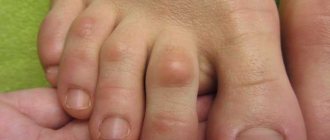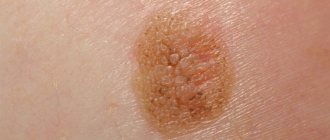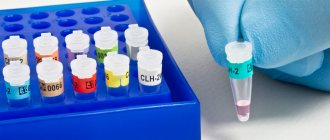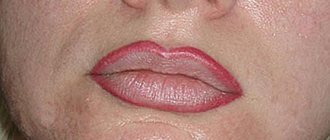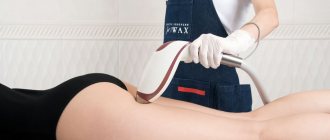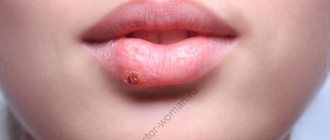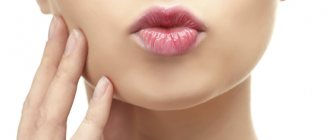Removing an ingrown toenail. Reviews
When deciding which doctor and which clinic to go to with an ingrown toenail, it is necessary to take into account the reviews of previous patients. Reviews are an important criterion for the correct selection and assessment of the quality of medical care.
Leave feedback
Nikita. Recurrent ingrown toenail
Hello, I wanted to share my experience. Since I was 12 years old, I have been tormented by the problem of ingrown toenails. Most doctors said that this is a predisposition and nothing can be done about it. They removed it several times, but after the nail grew back (3-4 months) it all started again. Over the past year, I had my nail removed 3 times, each time the operation was very painful and each time there was a relapse. I must say, I am impressed with the result of Alexander Shadzhievich’s work. Thanks to this doctor, in just 2 weeks my finger acquired a healthy and, importantly, aesthetic appearance. A complex procedure (removal of part of the periungual ridge, removal of part of the mold to correct the direction of nail growth, microwave treatment) prevented the problem from reoccurring. The incision site was sutured, thanks to which the wound healed quickly. A day later I already went to work. Anesthesia injections were made into the base of the finger almost imperceptibly, and then the entire operation was completely painless. I express my deep gratitude to my savior, a wonderful doctor and a true professional, a doctor of the highest category, Ph.D. Garmaev Alexander Shadzhievich.
Nail prosthetics
After removing the nail plate, an unsightly crust remains. Women who are more demanding in matters of aesthetics suffer especially. The feeling of security in the legs disappears, which negatively affects the psychological state. Great discomfort is felt when walking.
To restore comfort during rehabilitation, you can use nail prosthetics - install an artificial plate made of acrylic or gel.
You cannot do prosthetics right away: it is necessary for the wound to close and a crust to form. There should be no inflammatory processes, suppuration, psoriasis or other problems. An artificial nail is placed only on a clean, healthy surface. Before the procedure, it is necessary to disinfect not only the feet, but also the instruments used.
- Gevol is a polymer mass that is placed in an empty bed. A nail is formed from it, and after hardening the plate is adjusted to its shape.
- Unigzan - suitable only in cases where part of the natural nail plate remains (at least 3 mm).
- Glue and canoline. Treatment will require a complex system of alternate application of glue and polymer composition. But the material is breathable, and the plate is thin.
- Acrylate - used to smooth the growth of healthy natural nails.
Do not confuse prosthetics and extensions. The procedure itself is similar, but the polymers used have different compositions. Plasticizers introduced into the prosthesis make the artificial nail flexible and durable. And special components treat fungus and protect against re-infection. Dentures are not suitable as the main antifungal agent. But they manage to prevent and maintain healthy feet.
Barkalov Sergey
I suffered with the problem of an ingrown toenail for almost a month. When the pain became completely unbearable, I began to look for where I could be cured. As a result, I turned to Alexander Shadzhievich. He carried out all the procedures and follow-up superbly. I'll be honest, I was very nervous and worried about the operation. But the whole process, surprisingly, was almost painless, just like the first days of dressings. Even taking into account my business trips, everything healed quite quickly, the main thing is to follow all the doctor’s recommendations. I am very grateful to Alexander Shadzhievich for the accuracy and attention shown during the treatment.
Diagnosis of the disease
Surgeons and podologists treat ingrown toenails. To make a diagnosis, the doctor examines the foot. If he deems it necessary, the patient may be prescribed:
- OAM;
- UAC;
- x-ray of the foot (indicated if the doctor suspects osteomyelitis, osteophyte);
- bacteriological examination (necessary if an ingrown toenail is accompanied by suppuration, to determine the microorganisms that caused the disease and their sensitivity to antibacterial drugs).
Based on the diagnostic results, the doctor decides how to remove the ingrown toenail.
Azanov Igor Gennadievich
Since the age of 14 (since 1973), I have had the problem of an ingrown toenail on the big toe of my right foot. Initially, I did not contact doctors. I cut it out myself, which was sometimes extremely painful and was accompanied by suppuration (I applied Vishnevsky ointment). Then the nail grew back and the problem returned. For the first time, the rightmost part of a large nail was removed in a hospital in the 80s. There was no positive result, as with all subsequent surgical removals (several times). In 2006, a private clinic performed laser removal, which also turned out to be unsuccessful. In 2022, I went to a podiatry clinic for advice on preventing ingrown toenails (they don’t do removal there). If it is necessary to remove an ingrown nail, it is recommended to contact Dr. Garmaev A.Sh. 10/12/2019 doctor Garmaev A.Sh. performed a marginal resection of the nail using radio waves, gave qualified recommendations on wound treatment and further nail care. As a result of the operation, for the first time I got rid of subsequent ingrown nails and all the accompanying problems. I express my deep gratitude to doctor Alexander Shadzhievich Garmaev for his high professionalism, attentive and sensitive attitude to the patient’s problem. Sincerely, Azanov I.G. 04/29/2020
How to remove a nail yourself
In the modern rhythm, everyone does not have enough time, including visiting doctors. And many simply do not trust young doctors. Therefore, the question of self-removal of a nail with fungus on the foot is always relevant. In a clinical setting, the risks are much lower, but if there is no other choice, then you need to strictly follow the instructions below. There are a number of good pharmaceutical products for removing fungal areas. Before using them, you need to soak the affected fingers in a solution of hot water, soap and soda (one teaspoon per liter of water). The nail should steam and soften. The top layer of the plate should be cut off. The drugs are aggressive, so for protection, cover the periungual area with a simple plaster.
- Keratolytic plaster "Ureaplast" is a thick plaster mass. It is distributed over the nail plate, trying not to touch the skin. The compress should be kept for 4-5 days, then check the result. If the nail does not go away, repeat the procedure until it is removed.
- Mikospor ointment has a thinner consistency compared to the patch, but the principle of action is the same. The compress is left here for one day. After which the feet are soaked again for 10 minutes and the softened tissue is removed. It is worth repeating the procedure until the desired result.
- Nailitis. One bottle (15 ml) is enough for 3-4 plates, depending on their size. Apply a thick layer without rubbing, keep the compress for three days.
- Nogtimycin acts in the same way as nailitis. Apply a thick layer and cover for three days. Soak again, clean off the loose layer, apply cream. Repeat until completely removed.
- Kanespor is distinguished by its gentle composition. Acts only on affected areas and does not corrode the skin. Apply once a day, under the patch. After each removal, rinse the foot, scrape off the softened mass and repeat application until the nail bed is clear.
The above drugs and their analogues are used only for removing nail plates. They do not have antifungal properties. Self-medication for fungal infections is fraught with bad consequences. Incompletely removed spores provoke re-infection. Lack of sterility will lead to the spread of fungal infection. In addition, without proper disinfection, another virus may be introduced, due to which the inflammatory process will begin again.
Consequences of lack of treatment
When the nail grows incorrectly, the finger begins to swell. Even ordinary movement of a limb causes pain, not to mention its full use. However, at an early stage, many do not pay due attention to this problem. As a result, a number of patients develop serious complications:
- Suppuration. An abscess forms in the problem area, the appearance of which is accompanied by an increase in temperature, blue discoloration of the tissue, and increased swelling.
- Osteomyelitis. The infection affects the bones, promotes their delamination and deformation, and tissue necrosis begins.
- Lymphadenitis. The infection spreads to the lymph nodes, and boils and phlegmons form in places of inflammation.
- Pyogenic granuloma. Red granules form in the affected area, the skin ridge bleeds profusely, and pus begins to ooze from under the nail.
- Gangrene. Extremely rare, but it does occur. The blood supply to the affected area is completely stopped. Necrosis (death) of tissue begins. The only possible treatment is amputation.
At increased risk are diabetics, overweight people and those with impaired blood flow to the lower extremities. In them, the infection affects the tissues much faster.
Why do you need to have surgery?
A finger with an ingrown nail swells, suppurates and hurts, which leads to impaired functionality - it becomes difficult to even just walk, not to mention intense physical activity. In addition, penetration of pus deeper into the tissue can provoke serious complications, including phlegmon or gangrene of the finger.
The big toes are the most susceptible to ingrown toenails. Conservative methods of treating such a problem are not always effective. The radical treatment method is surgery.
Options for surgeries at the clinic
Regular or simple removal
We resect the ingrown edge of the nail plate. Using a Volkmann spoon, we scrape out the pathological granulations and treat the growth zone.
Cost - 2500 rubles
Radio wave removal
We remove ingrown nails and pathological granulations. We treat the growth zone with radio wave electrodes (Surgitron or Fotek E81M). They give more reliable results
.
Cost - 3500 rubles
Operation according to Schmieden
Resection of
the ingrown edge of the nail with excision of the ridge and part of the bed. We apply stitches (atraumatic suture material). In advanced situations or in case of relapse.
Cost - 4500 rubles
Complete nail removal
The entire nail plate is removed in extreme cases, only when the nail is deformed, practically peeled off, cannot be restored, and causes suffering and pain. This situation is possible after severe trauma, long-term treatment of nail diseases, with total fungal infection and onychogryphosis. Removal is performed under general anesthesia.
Surgical removal of the nail plate for fungal infection in St. Petersburg (St. Petersburg)
The use of a surgical technique to remove the nail plate in cases of fungal infection is a radical and effective method of treatment.
This technique is used exclusively in advanced cases of onychomycosis, and it is impossible to use more gentle methods. A special feature of this manipulation is the possibility of removing subungual hyperkeratosis, as well as, in combination with it, cystic formations of the skin. The procedure is carried out as prescribed by a dermatology specialist.
It is worth noting that a number of diagnostic examinations are mandatory in advance in order to exclude possible contraindications to surgical treatment. Such procedures include thorough examinations by specialized specialists, laboratory tests and tests of various kinds, as well as instrumental examinations.

